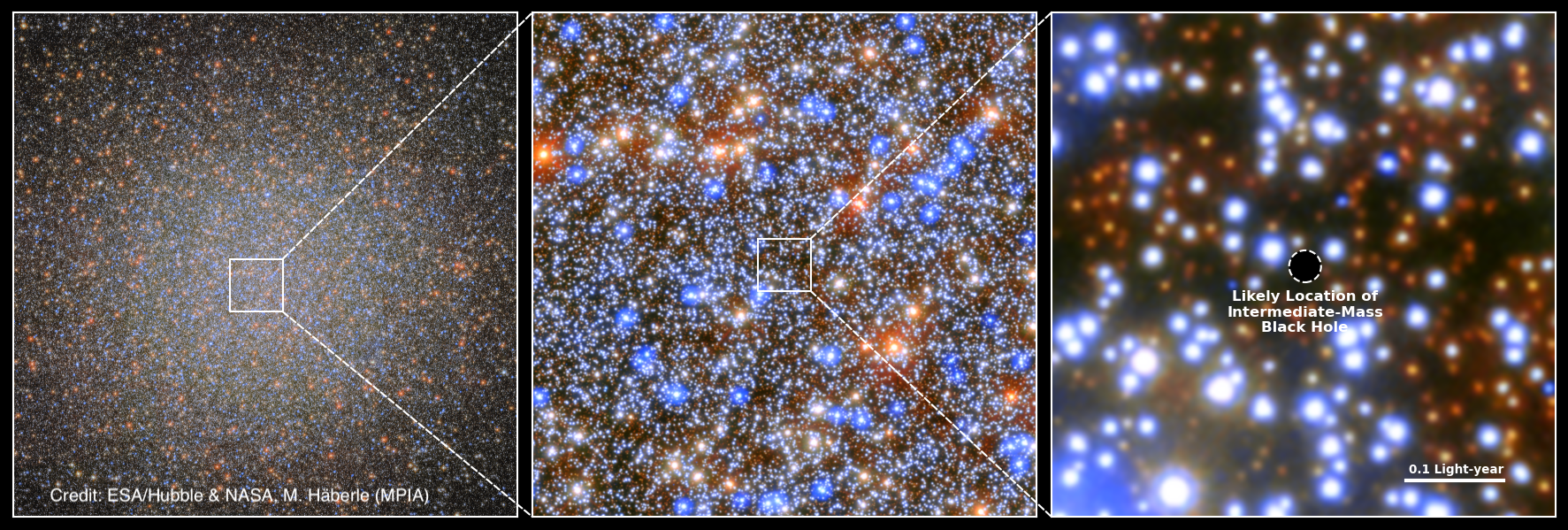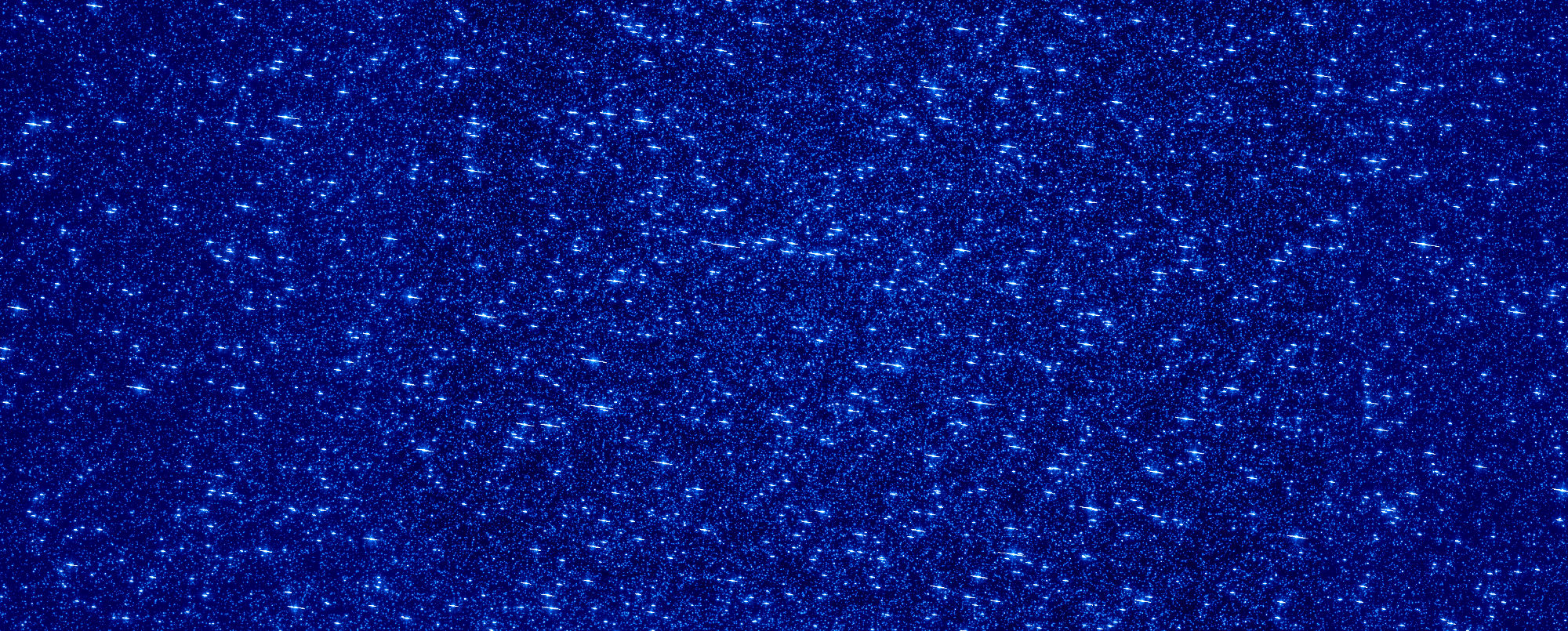Research
My Research on Globular Clusters and Intermediate-Mass Black Holes
Fast-moving stars around an intermediate-mass black hole in Omega Centauri
Intermediate-mass black holes are some of the most elusive objects in modern astrophysics. They are considered a "missing-link" in supermassive black hole formation, and their detection in the local universe could help to differentiate between different proposed black hole seeding mechanisms in the early universe.
Omega Centauri, the most massive globular cluster of the Milky Way, has been the target of various searches for an intermediate-mass black hole in its center, but the existence of such a black hole has remained controversial. Using our new proper motion catalog (see below), we were able to detect 7 fast-moving stars in its central 3 arcseconds, providing new, strong evidence for the presence of an intermediate-mass black hole with at least 8,200 solar masses.

Creating a high-precision proper motion catalogue for Omega Centauri
Omega Centauri is the most massive globular cluster of the Milky Way. Because of its high mass and its complex stellar populations, it is nowadays widely accepted to be the accreted nucleus of a dwarf galaxy. It, therefore, provides a unique opportunity to study a low-mass galactic nucleus and a witness to the early merger history of the Milky Way. To disentangle its formation history and its dynamics, we have created a new, deep, high-precision proper motion catalog for 1.4 million stars within its half-light radius. The proper-motion catalog is complemented with multi-band photometry spanning the UV to the near-infrared. The catalog, which is the largest kinematic catalog for any star cluster, is publicly available and already enabling several interesting science cases.
This work is part of a larger effort: In the oMEGACat project (PIs: Nadine Neumayer and Anil Seth) we aim to disentagle the formation history of Omega Centauri with a comprehensive dataset. We combine a large, spectroscopic catalog (see Nitschai et al. 2023) with the above-mentioned Hubble Space Telescope based astro-photometric catalog.
Hunting for intermediate-mass black holes in globular clusters: an astrometric study of NGC 6441
In my master's thesis, we searched for the dynamical signature of a potential IMBH in the massive globular cluster NGC 6441 by combining astrometric Hubble Space Telescope observations with ground-based data from the NACO instrument at the Very Large Telescope. We managed to combine the very different datasets and measure high-precision proper motions in the crowded core of the cluster. This allowed to place an upper limit on the mass of a potential IMBH.My Research on Astronomical Instrumentation
Prototype tests for ELT MICADO
MICADO will be a first-light instrument at the Extremely Large Telescope, which is currently under construction. I participated in the project by testing various components, including encoders for the derotator, the flat-field unit, gas-emission lamps for spectroscopic calibration and the astrometric calibration pinhole mask.Development, commissioning, and early science exploitation of the Local Volume Mapper Instrument

The Local Volume Mapper project is one of three surveys that form the Sloan Digital Sky Survey V. Its goal is to spectrally map the interstellar gas in our Galaxy and in other galaxies in the local volume. The plan is to observe some 3000 square degrees of sky during the ~5 years of the survey. To do this, MPIA will produce an array of 4 small telescopes for the Las Campagnas Observatory in Chile. The science telescope hosts a bundle of 1801 fibers, which form an imaging input almost half a degree in diameter. The light from this telescope, along with that from the two sky calibration telescopes and the spectrophotometric telescope, is guided to the input of 3 Spectrographs with a resolution of R~4000 over the wavelength range 320-980 nm. I will participate in all stages of the project, from telescope design, integration and alignment in the MPIA lab, to on-sky tests, and ultimately, commissioning and early science exploitation in Chile.
Supervisor: Tom Herbst
